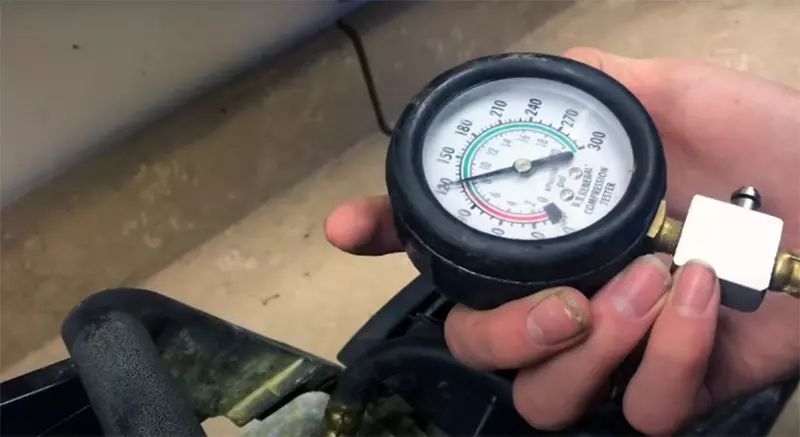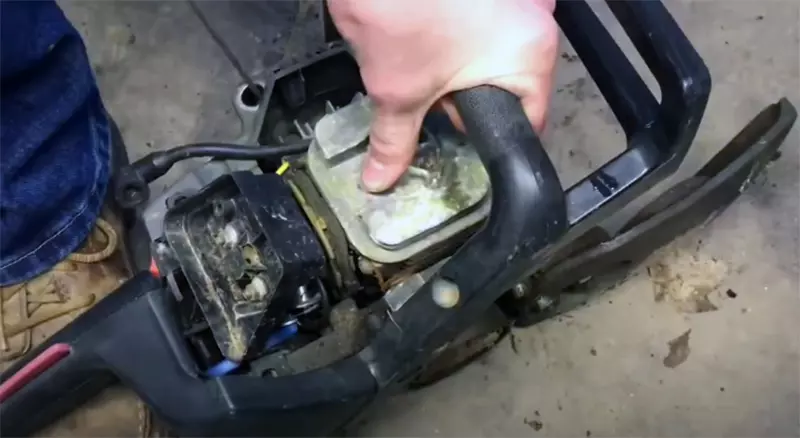20Sep 2023
table of contents

Welcome to the official blog of BISON chainsaw! In this blog post, we'll guide you through the process of performing a chainsaw compression test. Whether you're a professional woodcutter or a DIY enthusiast, understanding the health of your chainsaw engine is critical to achieving optimal performance and safety. let's start!
A chainsaw compression test allows you to evaluate the internal condition of your chainsaw engine. By measuring compression pressure, you can identify potential problems such as worn piston rings, damaged cylinders, or air leaks. This early diagnosis helps prevent further damage and ensures your chainsaw is operating at peak performance.
There are several factors that affect chainsaw compression. These include wear, fuel mixture, piston ring condition and overall cylinder health. It is important to check compression regularly to detect any anomalies and resolve them promptly.
If you notice a reduction in chainsaw power or the engine shuts down, you should perform a chainsaw compression test. Compression testing is typically performed using a compression tester. A chainsaw compression tester is a tool used to accurately measure compression. Below BISON will walk you through how to perform a chainsaw compression test.
Start by engaging the chainsaw brake.
Then remove the spark plug from the chain saw engine.
Attach a compression tester to the spark plug orifice. Make sure the seal is tight and no air can escape. If the seal is not tight, the meter may give false readings.
Keep the throttle lever open during the test to allow maximum airflow.
Gently pull on the chainsaw starter cord. You will notice that the meter needle will start to move. Repeat this process until the needle stops moving and the pressure stabilizes.
Pay attention to the reading on the compression tester.
Compare the readings to the manufacturer's specifications to determine if the compression is within acceptable limits.
Remember to refer to your chainsaw's owner's manual for specific details on recommended compression tester models and ideal compression levels. After completing the chainsaw compression test, remove the compression tester and put the spark plug back in place. To make sure your chainsaw is working properly, you should start it up for a small test run. Don't forget to release the chain saw brake.

If you don't have a compression tester, you can perform a quick thumb test to get a rough estimate of your chainsaw's compression. Please follow these steps:
Additionally detach the spark plug from engine.
Place your thumb over the hole that the spark plug originally filled.
Gently pull on the chainsaw starter cord. There should be enough air to push your thumb out of the hole when you do this. If this happens, your chainsaw has enough compression. If this does not happen, your chainsaw has a low compression level.
Keep in mind that the thumb test is not as accurate as using a compression tester. BISON recommended to use a compression tester for accurate measurements.

To ensure you get accurate compression readings during testing, consider the following tips:
Before performing a compression test, make sure your chainsaw is working properly. Check spark plugs, fuel filter and air filter, replace or clean if necessary.
Warm up the engine before performing a compression test.
Follow the recommended testing procedures outlined in the chain saw owner's manual.
Take multiple readings and average them for more reliable results.
Refer to the chain saw manufacturer's specifications for proper interpretation of the results.
It can be difficult to determine the exact compression requirements for each chainsaw as the ideal compression range may differ based on the model and manufacturer. Generally, a compression reading of 100-150 PSI is considered acceptable for chainsaws. However, for precise compression specifications, it is recommended to consult your chainsaw's owner's manual or contact the manufacturer.
Incorrect compression levels can cause various issues with the performance of your chainsaw. Let's explore two common scenarios:
High compression
Excessive compression can cause difficulty starting the chain saw, overheating, and potential damage to engine components. To avoid high compression problems, ensure regular maintenance, including proper lubrication and adjustment of chain saw components.
Low compression
Low compression can result in reduced power, poor performance, and difficulty starting the chain saw. If you notice these symptoms, it's crucial to identify and resolve the low compression issue promptly. This may involve replacing worn piston rings, repairing cylinder damage, or fixing leaks.
If you experience erratic compression on your chainsaw during testing, there could be a number of factors causing the problem. Common causes include air leakage, worn piston rings, and damaged cylinders. To address those problem, please the follow steps:
Check the chain saw for any obvious signs of air leakage, such as a damaged gasket or loose connections. Repair or replace any faulty parts.
Check the piston rings for wear or damage. If needed, substitute it with a fresh one.
Inspect the cylinder for signs of damage, such as scratches or scratches. If the damage is severe, the cylinder may require professional repair or replacement.
The above is how to test the compression force of a chainsaw and what to do if compression instability occurs. If you don't have much experience fixing chainsaw compression levels, we recommend you still contact a professional. BISON chainsaw manufacturer offers a variety of models, including two stroke electric, cordless, and gasoline chainsaws, offering versatility and customization options to meet the needs of any project, contact today!
inquiry form here
BISON BLOG, All the latest news and views from Bison Machinery.